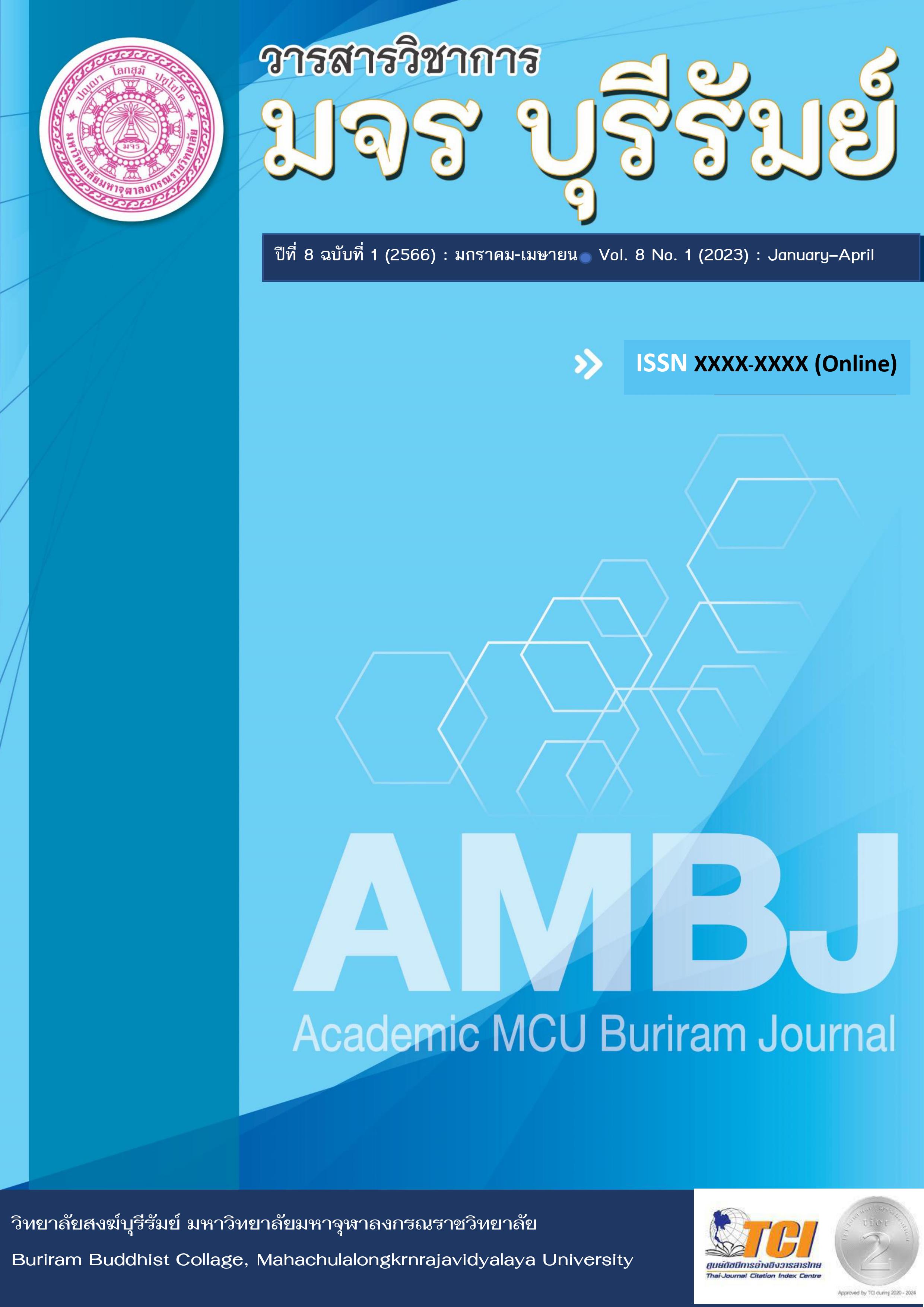Public Hearing and Referendum as Political Legitimacy
Keywords:
Public Hearing, Referendum, Political LegitimacyAbstract
The purposes of this article were: 1) to study the concept of public hearing, 2) to study the concept of referendum, 3) to study the concept of political legitimacy, and 4) to analyze how they are related to each other. This study used cases of constitution drafting in 1997 and constitution drafting in 2007, 2017 for analysis base on four concepts. The study found that the concepts of public hearing, referendum and political legitimacy are related. That is to say, the concept of public hearing has strategies and tactics to support political legitimacy, while the concept of referendum is a form of direct democracy in which the people have the power to decide on major national issues by using the principle of majority rule. Political legitimacy in the case of public hearing arise from the fact that the Constituent Assembly has allowed both side of people who agree or disagree to express their opinions so widely. This made members of the parliament voted in favor with overwhelming votes although the constitution drafting in 1997 does not have a referendum. As for the draft constitution of the Kingdom of Thailand 2007 and 2017, despite political legitimacy due to being approved by more than half according to the principle of majority rule through a referendum. However, both constitutions were reversed, criticized by many parties for not allowing the people to participate in expressing their opinion widely. As the result, the constitution had problems with political legitimacy later on.
References
กล้า สมุทวณิช. (2565). รัฐธรรมนูญ 2540: รัฐธรรมนูญฉบับประชาชนในความทรงจำ. เข้าถึงได้จาก https://pridi.or.th/th/content/2022/10/1305 (สืบค้นเมื่อ 10 ธันวาคม 2565).
แก้วสรร อติโพธิ. (2536). การไต่สวนสาธารณะ. กรุงเทพมหานคร: บริษัท พี. เพรส จำกัด.
คณะกรรมาธิการประชาสัมพันธ์, สภาร่างรัฐธรรมนูญ. (2540). ร่างรัฐธรรมนูญแห่งราชอาณาจักรไทยฉบับประชาชน สิงหาคม 2540.
คณะกรรมาธิการยกร่างรัฐธรรมนูญ, สภาร่างรัฐธรรมนูญ. (2540). ร่างรัฐธรรมนูญแห่งราชอาณาจักรไทยพุทธศักราช.
คณะทำงานจัดทำคู่มือประเด็นประชาพิจารณ์, สภาร่างรัฐธรรมนูญ. (2540). คู่มือประเด็นประชาพิจารณ์.
คณะทำงานจัดทำประชาพิจารณ์, สภาร่างรัฐธรรมนูญ. (2540). รายงานประมวลผลการจัดทำประชาพิจารณ์ในระดับภาค.
คณะอนุกรรมาธิการจัดทำประชาพิจารณ์, สภาร่างรัฐธรรมนูญ. (2540). สรุปผลการจัดประชาพิจารณ์ระดับจังหวัด. (4 เล่ม).
คณะอนุกรรมาธิการจัดทำประชาพิจารณ์, สภาร่างรัฐธรรมนูญ (2540). คู่มือการจัดทำประชาพิจารณ์เรื่องการยกร่างรัฐธรรมนูญฉบับประชาชน.
คณะอนุกรรมาธิการสนับสนุน สสร.จังหวัด, สภาร่างรัฐธรรมนูญ. (2540). นานาทัศนะเกี่ยวกับร่างรัฐธรรมนูญ.
คลังสารสนเทศสถาบันนิติบัญญัติ. (2539). รัฐธรรมนูญแห่งราชอาณาจักรไทย พุทธศักราช 2534 แก้ไขเพิ่มเติม (ฉบับที่ 6) พ.ศ. 2539. เข้าถึงได้จาก https://dl.parliament. go.th/handle/20.500.13072/451953 (สืบคนเมื่อ 28 พฤศจิกายน 2565).
ชาญชัย แสวงศักดิ์. (2540). ประชาพิจารณ์. กรุงเทพมหานคร: บริษัท โรงพิมพ์เดือนตุลา จำกัด.
นันทวัฒน์ บรมานันท์. (2555). การออกเสียงประชามติ (REFERENDUM): ประสบการของไทยกับต่างประเทศ. เข้าถึงได้จาก https://www.senate.go.th/assets/ portals/93/fileups/272/files/S%E0%B9%88ub_Jun/1interview/IN44_jun_9_4.pdf (สืบค้นเมื่อ 6 มกราคม 2566).
พจนานุกรม ฉบับราชบัณฑิตยสถาน พ.ศ. 2554. (2554). เข้าถึงได้จาก https://dictionary. orst.go.th/ (สืบค้นเมื่อ 23 ธันวาคม 2565).
ราชกิจจานุเบกษา. (2558). รัฐธรรมนูญแห่งราชอาณาจักรไทย (ฉบับชั่วคราว) พ.ศ. 2557 แก้ไขเพิ่มเติม (ฉบับที่ 1) พ.ศ. 2558. เข้าถึงได้จาก https://ratchakitcha. soc.go.th/ documents/2046098.pdf (สืบค้นเมื่อ 7 มกราคม 2566).
วีระ สมความคิด. (2550). รายงานฉบับสมบูรณ์ โครงการวิจัยเรื่อง “การติดตามการออกเสียงประชามติ เพื่อพิจารณาร่างรัฐธรรมนูญ 2550 ในพื้นที่กรุงเทพมหานคร. เสนอต่อสถาบันพระปกเกล้า.
สำนักงานคณะกรรมการกฤษฎีกา. (2557). รัฐธรรมนูญแห่งราชอาณาจักรไทย พ.ศ. 2492. เข้าถึงได้จาก http://lad.correct.go.th/main/wp-content/uploads/2018/08/% E0%B8%A3%E0%B8%98%E0%B8%992492.pdf (สืบค้นเมื่อ 6 มกราคม 2566).
สำนักงานคณะกรรมการการเลือกตั้ง. (2559). ข้อมูลสถิติการออกเสียงประชามติ พ.ศ. 2550. เข้าถึงได้จาก https://www.ect.go.th/ect_th/ewt_dl_link.php?nid=234 (สืบค้นเมื่อ 12 ธันวาคม 2565).
สำนักงานคณะกรรมการการเลือกตั้ง. (2559). ข้อมูลสถิติการออกเสียงประชามติ พ.ศ. 2559. เข้าถึงได้จาก https://www.ect.go.th/ect_th/download/article/article_ 20170519073438.pdf (สืบค้นเมื่อ 13 ธันวาคม 2565).
สำนักงานคณะกรรมการการเลือกตั้ง. (2559). ผลการลงประชามติอย่างเป็นทางการ. เข้าถึงได้จาก https://www.ect.go.th/ect_th/ewt_news.php?nid (สืบค้นเมื่อ 12 ธันวาคม 2565).
หอสมุดรัฐสภา. (มปป). รัฐธรรมนูญแห่งราชอาณาจักรไทย (ฉบับชั่วคราว) พุทธศักราช 2549. เข้าถึงได้จาก https://library.parliament.go.th/th/raththrrmnuuychbabthii -17-phuththsakrach-2549 (สืบค้นเมื่อ 5 ธันวาคม 2565).
หอสมุดรัฐสภา. (มปป). รัฐธรรมนูญแห่งราชอาณาจักรไทย พุทธศักราช 2511. เข้าถึงได้จาก https://library.parliament.go.th/th/raththrrmnuuychbabthii-8-phuththsakrach-2511 (สืบค้นเมื่อ 15 ธันวาคม 2565).
หอสมุดรัฐสภา. (มปป). รัฐธรรมนูญแห่งราชอาณาจักรไทย พุทธศักราช 2540. เข้าถึงได้จาก https://library.parliament.go.th/th/raththrrmnuuyaehngrachxanacakrithy-phuththsakrach-2540 (สืบค้นเมื่อ 15 ธันวาคม 2565).
องค์กรพัฒนาเอกชนไอลอว์. (2562). 3 ปี ประชามติ: ทำไมคนถึงไม่พอใจประชามติ ปี 2559. เข้าถึงได้จาก https://ilaw.or.th/node/5355 (สืบค้นเมื่อ 25 พฤศจิกายน 2565).
Barker, Rodney. (1990). Political Legitimacy and the State. Oxford: Clarendon Press.
Beetham, David. (1991). The Legitimation of Power. Hampshire: The Macmilland Press.
Mater, Jean. (1984). Public Hearings Procedures and Strategies. New Jersey: Prentice-Hall.
Downloads
Published
How to Cite
Issue
Section
License
Copyright (c) 2023 Academic MCU Buriram Journal

This work is licensed under a Creative Commons Attribution-NonCommercial-NoDerivatives 4.0 International License.
ทัศนะและความคิดเห็นที่ปรากฏในบทความวารสารฉบับนี้ถือเป็นความรับผิดชอบของผู้เขียนบทความนั้น ไม่ถือเป็นทัศนะและความรับผิดชอบของบรรณาธิการ





